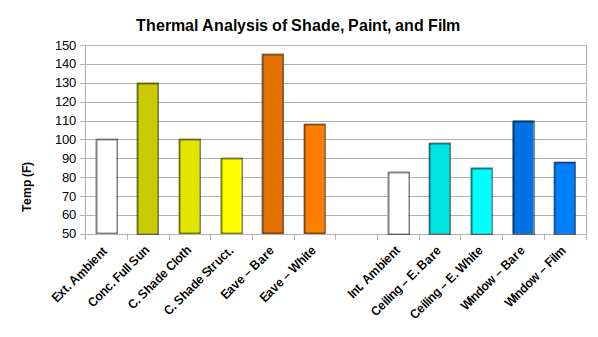So much of what we hear in the news and read on-line about climate change is the rising cost of electricity to cool our homes, and the increasing burden on already oversubscribed electric power grids. Emphasis is placed on the consumption of electricity, not the reduction of electric consumption. In a warming climate, reduction of thermal gain equates to a lower electric bill.
Yes, local solar photovoltaic systems augment (grid-tied) or remove (off-grid) reliance on the electric grid, but not everyone can afford PV arrays, or do not have permission from the apartment manager or rented home owner to modify the roof or electric panel.
No matter if you are moving toward renewable energy or simply wanting to reduce your electric consumption and associated electric bill, and improve the quality of your interior comfort in the midst of increasingly uncomfortable summers, there are a number of things you can do to reduce thermal gain—the amount of heat trapped inside your home during the day, and then remove that heat by night.

Above graph: “Ext. Ambient” is the air temperature at the time of recording. “Conc. Full Sun” is concrete in full sun. “C. Shade Cloth” is an adjacent slab of concrete positioned below a shade cloth. “C. Shade Struct.” is a slab of concrete that remains in shadow all day, each day, i.e. beneath a porch roof. “Eave – Bare” is the temperature of the underside of the steel roof overhang, original galvanized coating. “Eave – White” is the temperature of the underside of the steel roof overhang, the top side painted gloss white. “Int. Ambient” is the interior air temperature. “Ceiling – E. Bare” is the temperature of the interior wood ceiling below original galvanized steel roofing, with 4″ foam insulation between. “Ceiling – E. White” is the temperature of the interior wood ceiling below the painted gloss white steel roofing, with 4″ foam insulation between. “Window – Bare” is the temperature of the glass itself without any film. “Window – White” is the temperature of the glass with an exterior application of the while vinyl film.
In this series of essays we will introduce, explain, and demonstrate various means to reduce the interior temperature of your home. Many of the concepts are explored are the direct result of work we have done to our own home, here in Cascabel, Arizona. The results are immediate and noticeable.
The concepts explored will include:
- Reflecting sunlight via white paint and white vinyl film; and
- Reducing sunlight transmission via window films
- Reducing sunlight transmission via shade structures
- Thermal mass
- Passive versus active cooling
- Swamp cooler versus air conditioning; and
- Types of air conditioning (cooling)
- Cooling by plants, and green roofs
This landing page will be updated, with links to each new essay as added.
The first two essays are posted:
Stay tuned!